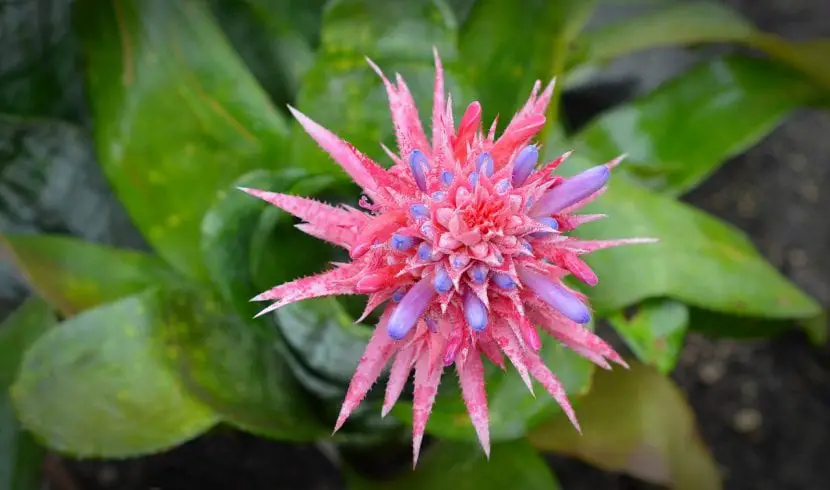The Aechmea It is a precious bromeliad, so pretty, that we might well think that it is very difficult to care for and even more difficult to maintain. But we would be wrong. In fact, of all the tropical plants that we can find in a nursery, this is one of the most suitable for beginners.
If you want to have it as beautiful as the first day, You will not need much knowledge or experience about the cultivation of Greenjust some tricks that we are going to give you below.
The Aechmea is a native plant from Mexico to southern South America that grows in rosettes rising to a height of no more than 50cm from the ground. It is distinguished by having wide leaves, about 5cm, 20-30cm long, and leathery. The flowers are grouped in very showy inflorescences, which is why many of us have chosen to acquire some to decorate the home or garden.
However, if we want to keep her healthy, we must protect it from direct sun and always water it with soft waterwithout lime, moistening the substrate and, also, pouring the water into the center of each rosette each time it runs out. Likewise, in spring and summer we can pay it with organic fertilizer in liquid form, such as guano or worm humus, following the indications specified on the package.
Although it is a slow growing plant, we will have to change it from a pot to a slightly larger one every two yearsusing a farmland that has good sewer system, like black peat mixed with perlite in equal parts for example. In this way, we will prevent the roots from rotting.
With the arrival of winter we will protect it in a bright room where there are no draftsand we will space the waterings to the point that we will only water when the substrate is dry or almost dry.
So we will have Aechmea to enjoy for years to come.


